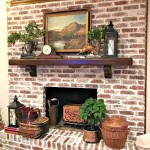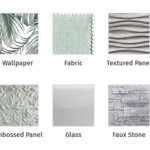Fireplace Safety Tips for a Warm and Secure Winter
Fireplaces offer a comforting warmth and ambiance during the winter months. However, they also pose significant safety risks if not properly maintained and used. Ensuring fireplace safety involves understanding potential hazards and implementing preventative measures to protect property and well-being. This article details essential fireplace safety tips to ensure a warm and secure environment throughout the winter season.
Annual Inspection and Maintenance
A comprehensive annual inspection by a qualified chimney sweep is paramount for fireplace safety. A professional can identify potential hazards such as creosote buildup, structural damage, or blockages that could lead to chimney fires or carbon monoxide poisoning. Early detection and repair of these issues are crucial for preventing serious incidents.
Creosote is a highly flammable byproduct of burning wood. It accumulates in the chimney flue as smoke cools and condenses. If left unaddressed, creosote buildup can ignite, resulting in a dangerous chimney fire. The chimney sweep will assess the level of creosote and recommend the appropriate cleaning method, which may involve using specialized brushes and tools to remove the buildup effectively.
The inspection should also cover the structural integrity of the chimney. Cracks, loose bricks, or deteriorated mortar can compromise the chimney's ability to properly vent smoke and gases. These structural issues can allow heat and flammable gases to escape into the surrounding structure, increasing the risk of a house fire. Any necessary repairs should be completed promptly by a qualified professional.
Furthermore, the chimney sweep will check for any obstructions in the flue, such as bird nests, debris, or animal activity. These blockages can impede the proper flow of smoke and gases, leading to carbon monoxide buildup inside the home. Carbon monoxide is a colorless, odorless, and deadly gas. Installing and maintaining carbon monoxide detectors on every level of the home is crucial for early detection and alerting occupants to the presence of this dangerous gas.
In addition to the annual inspection, homeowners should perform regular visual checks of the fireplace and chimney. Look for signs of damage, such as cracks in the firebox, loose bricks, or crumbling mortar. Address any minor repairs promptly to prevent them from escalating into more significant and costly problems.
The damper, which controls airflow through the chimney, should also be inspected regularly. Ensure that it opens and closes smoothly and creates a tight seal when closed. A malfunctioning damper can allow heat to escape when the fireplace is not in use and can also allow cold drafts to enter the home.
Proper maintenance also extends to the area surrounding the fireplace. Keep the area clear of flammable materials such as newspapers, curtains, and furniture. Arrange furniture so that it is at least three feet away from the fireplace opening to prevent accidental ignition.
Safe Burning Practices
Selecting the appropriate type of wood is crucial for safe burning practices. Only burn seasoned hardwoods such as oak, maple, and ash. Seasoned wood has been air-dried for at least six months, reducing its moisture content. Burning wet or green wood produces more smoke and creosote, increasing the risk of chimney fires.
Never burn treated wood, painted wood, or artificial logs in a wood-burning fireplace. These materials release harmful chemicals when burned, which can be hazardous to human health and can also damage the fireplace and chimney.
Build fires responsibly, starting with a small amount of kindling and gradually adding larger pieces of wood. Avoid overfilling the firebox, as this can lead to excessive smoke and heat. Ensure that the fire is contained within the firebox and that no burning embers escape.
Never leave a fire unattended. Before leaving the room or going to bed, ensure that the fire is completely extinguished. Allow the embers to burn down completely and then use a shovel and tongs to spread them out evenly in the firebox. Pour water over the embers to ensure that they are fully extinguished. Never use flammable liquids such as gasoline or kerosene to start or accelerate a fire.
Use a fireplace screen or mesh door to prevent sparks and embers from escaping the firebox. These barriers can help protect carpets, furniture, and nearby materials from accidental ignition. Ensure that the screen or door is properly fitted and securely in place.
For gas fireplaces, ensure that the gas supply is properly connected and that there are no leaks. Schedule regular maintenance checks by a qualified technician to inspect the gas lines, burner, and venting system. Never attempt to repair or modify a gas fireplace yourself; always rely on a professional.
Proper ventilation is essential for safe fireplace operation. Ensure that the damper is fully open before lighting a fire. This allows smoke and gases to escape through the chimney. If the room becomes smoky, open a window or door to improve ventilation.
Essential Safety Equipment and Procedures
Having the right safety equipment readily available is crucial for responding to emergencies. A fully charged fire extinguisher should be located near the fireplace. Ensure that all household members know how to use the fire extinguisher properly. Regularly inspect the fire extinguisher to ensure that it is in good working condition.
Smoke detectors are essential for alerting occupants to the presence of smoke and fire. Install smoke detectors on every level of the home, especially near bedrooms and sleeping areas. Test the smoke detectors monthly to ensure that they are functioning correctly and replace the batteries at least once a year.
Carbon monoxide detectors are equally important, as carbon monoxide is a silent and deadly killer. Install carbon monoxide detectors on every level of the home, especially near sleeping areas and in rooms with fuel-burning appliances. Test the carbon monoxide detectors monthly and replace the batteries at least once a year.
Develop and practice a fire escape plan with all household members. Ensure that everyone knows the primary and secondary escape routes and the designated meeting place outside the home. Conduct regular fire drills to reinforce the escape plan and ensure that everyone can evacuate safely and quickly in the event of a fire.
Keep a bucket of sand or a container of baking soda near the fireplace for extinguishing small fires. Sand and baking soda can smother flames and prevent them from spreading. Never use water to extinguish a grease fire, as this can cause the fire to spread.
In the event of a chimney fire, evacuate the home immediately and call emergency services. Do not attempt to extinguish a chimney fire yourself. The fire department has the equipment and expertise to handle chimney fires safely and effectively.
If you suspect carbon monoxide poisoning, evacuate the home immediately and seek medical attention. Symptoms of carbon monoxide poisoning include headache, dizziness, nausea, and shortness of breath. Carbon monoxide poisoning can be fatal if left untreated.
Educate children about fireplace safety. Teach them to stay away from the fireplace and to never play with fire. Supervise children closely when the fireplace is in use.
By adhering to these fireplace safety tips, homeowners can enjoy the warmth and ambiance of their fireplaces while minimizing the risk of fire and carbon monoxide poisoning. Regular maintenance, safe burning practices, and essential safety equipment are all crucial for ensuring a safe and secure winter season.

5 Tips To Use Your Fireplace Safely This Winter Oklahoma Personal Iury Lawyers

Winter Fire Safety East Meadow Department

Winter Indoor Fire Safety Tips North Madison Volunteer Company

Fall And Winter Fire Safety Tips Upper Saint Clair Volunteer Department

Manage The Four C S Of Winter Fire Risks

Put A Freeze On Holiday Fires New Cumberland Borough

Cold Weather Fire Safety Hillsborough Bureau Of

Friday Fire Safety Tips Huntersville Department Volunteer Firefighter Opportunities Available Donate Today
Home Heating Fire Safety Tips Oviedo Fl

Rcfr Urges Residents To Use Safe Practices For Heating Homes This Winter Rutherford County Election Commission
Related Posts








